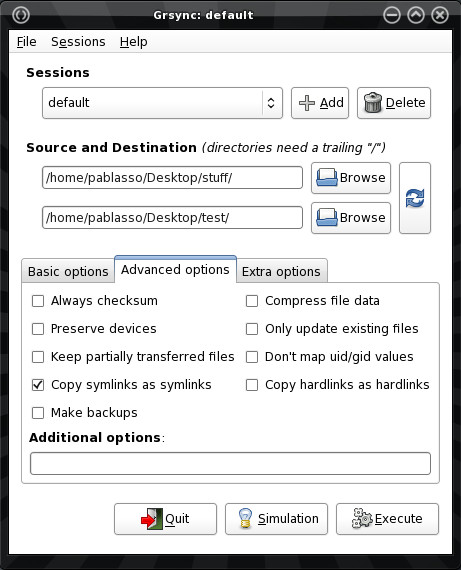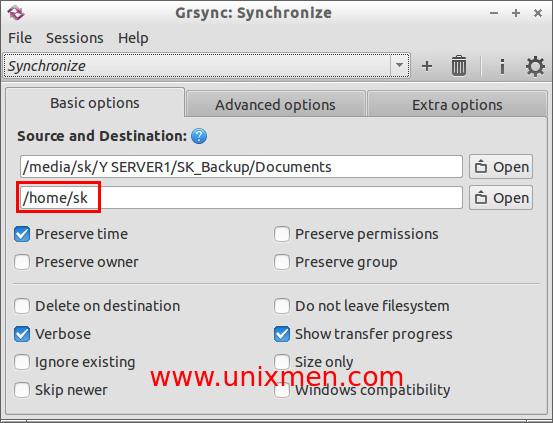
You can run through the man rsync page to discover additionally useful options for advanced usage, as I had mentioned earlier, rsync is a very powerful and versatile Linux tool, and many System Administrator and Linux power users know just how advantageous it is.
#GRSYNC SKIP EXISTING UPDATE#
To update existing files and prevent the creation of new files in the destination, we utilize the -existing option. Subsequently, to sync only updated or modified files on the remote machine that have changed on the local machine, we can perform a dry run before copying files as below: $ rsync -av -dry-run -update Documents/* :~/all/ So as to only sync new files on the local machine, that do not exist on the remote machine, we can include the -ignore-existing option: $ rsync -av -ignore-existing Documents/*. In the example below, I am copying files from my local machine to a remote server with the IP address – 10.42.1.5. Sync Updated Files Syncing Files From Local to Remote Linux $ rsync -aunv Documents/* /tmp/documentsĪfter executing a test run, we can then do away with the -n and perform a real operation: $ rsync -auv Documents/* /tmp/documents The -update or -u option allows rsync to skip files that are still new in the destination directory, and one important option, -dry-run or -n enables us to execute a test operation without making any changes.
#GRSYNC SKIP EXISTING HOW TO#
Suggested Read: How to Sync Two Apache Web Servers/Websites Using Rsync

Using the command below, being able to copy files from my Documents directory to /tmp/documents directory locally: $ rsync -av Documents/* /tmp/documents That said, let us dive into some examples to uncover how the concept above actually works. To start with, you need to remember that the conventional and simplest form of using rsync is as follows: # rsync options source destination Therefore, in this article, we shall examine how rsync can help us only sync new or changed files or directory content while making backups and beyond in Linux. One imperative differential of rsync in comparison to other file-coying commands in Linux is its use of the remote-update protocol, to transfer only the difference between files or directory content. It also supports usage without root privileges coupled with many more. Suggested Read: 10 Practical Examples of Rsync Command in Linuxįurthermore, it permits copying of links, devices, file or directory owner, groups, and permissions. Some of its eminent features and advantages include it is exceptionally versatile in that, it can copy locally, to/from a remote shell or remote rsync, it is also remarkably flexible, allowing users to specify any number of files to copy. It is as well a great tool popularly used for backup operations and mirroring.

As a system administrator or Linux power user, you may have probably come across or even on several occasions, used the versatile Linux Rsync tool, which enables users to expeditiously copy or synchronize files locally and remotely.


 0 kommentar(er)
0 kommentar(er)
